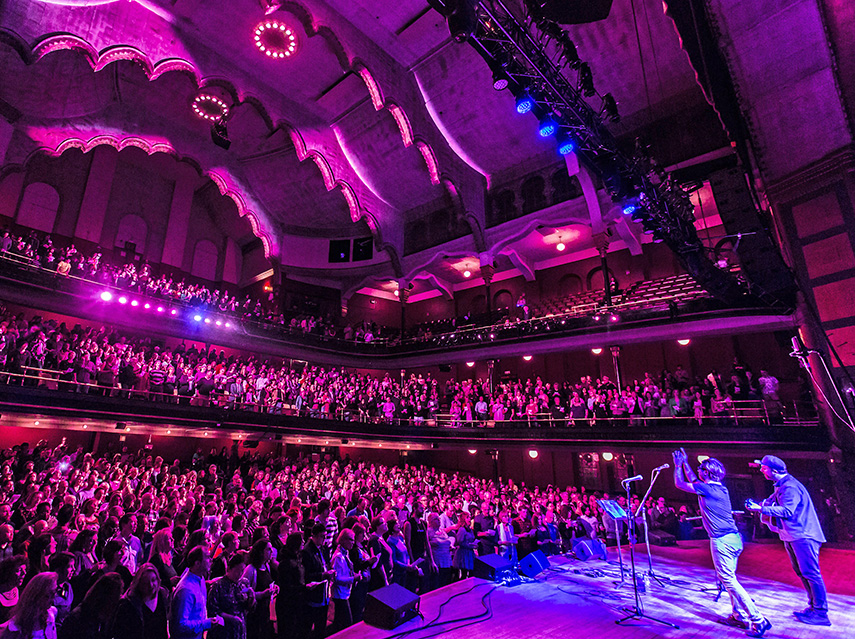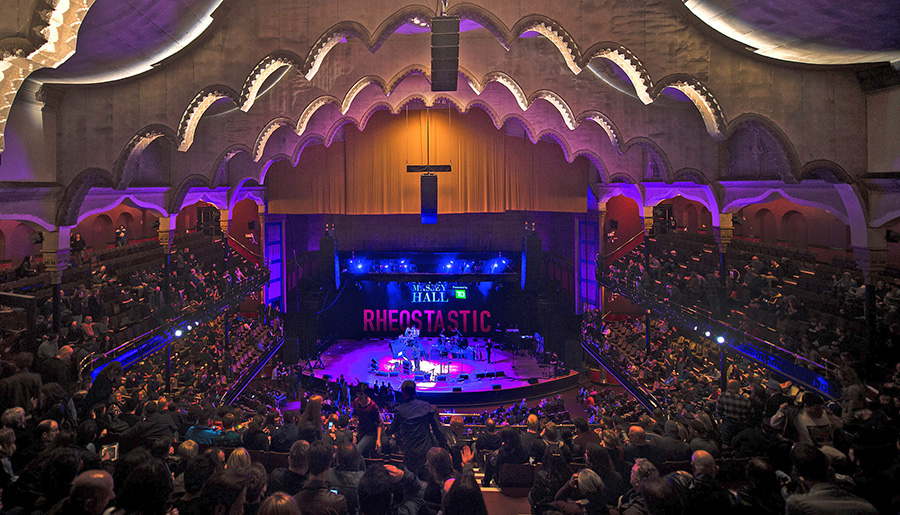
Additionally, various J Series loudspeakers are deployed for proscenium and balcony fill, with six V12s serving a delay cluster for the center gallery seating section. “The center cluster is to get to the top of the gallery at the back. Had we tried to do that with the left and right arrays there would have been a lot of energy pounding the walls to each side,” McKendrick explains, adding that amplification is via d&b 30Ds and D80s. “All of the processing for the actual PA tuning was done inside the amplifiers. Then we have a Meyer Sound Callisto processor on front end so touring engineers can put their own ‘flavor’ on it without getting inside the amps.”

Massey currently has a Soundcraft Vi 1 house console, but it may replace by the time the venue reopens. Also coming in that timeframe are a new stage monitoring system and a comprehensive “live focused” microphone package.
Connectivity is a combination of fiber optic as well as copper. When it comes to this facet of the system, Van Dijk notes, “You have to plan for failure. Reliability is something I always focus on because I’ve been the guy behind the console when it’s all going to hell and 20,000 people are looking at you.”
Putting It Together
What’s also being built is a production hub to bring all signals to one location. The venue’s Opticore networking protocol will be used within the performance spaces themselves, but along with signal from the systems to be installed in the venue’s new live spaces.
The main system may undergo some reconfiguration as well. “Because the changes we’ve made to the seating layout may necessitate a slightly different approach for fills, but we intend to put it back in more or less as it was,” McKendrick says.
Van Dijk adds, “The hall is a little wider than is typical and has some unique characteristics acoustically, which are positive from an acoustic point of view, but are challenging in some circumstances and there were always challenges with amplified sound. Overall though, it’s a wonderful place for performer/audience interaction. Amplified shows can sound magnificent and on stage it can be amazing, but if the wrong system is in there or the configuration is wrong it can be a struggle.”
The key, he notes, is maintaining the character of the venue while addressing specific areas with acoustic treatment. “Subtle changes to improve sonic results in an amplified condition, which is probably 95 percent of the time. Having the sound system and acoustics closely coupled in terms of design and physical characteristics with how they interact with one another is the best recipe for success. I can tell you, when it comes to sound systems and acoustics in the projects I’ve done over the years, I always say that the room always wins.”
In Memoriam

Unfortunately, Deane Cameron won’t see the end result of the project he came out of retirement to spearhead four years ago, passing away unexpectedly earlier this year at age 65. However, the passion he brought to the restoration continues to resonate with not only with those he worked so closely with recently, but with many in the Canadian music industry, including many of the artists who’ve played Massey Hall.
Over his 40-plus year career, 24 of them as president of EMI Music Canada, Cameron’s passionate advocacy for Canadian music and artists earned him the nickname “Captain Canada.” His role at Massey was a natural extension of that advocacy. “The music industry is two pieces,” he told me, “the recordings where an artist makes a statement of where they’re at and the spontaneous expression of the art live. To be able to say I’ve been thoroughly involved in both really makes it all feel complete.”
For Cameron, stewarding the revitalization was a singular honor: “When this opportunity came up it had incredible significance to me, because of music, but also because my family has been in Toronto since the early 1890s and I’d hear my family talk about Massey Hall when I was growing up. I was so honored and enthusiastic to be involved.”
“One of the things that’s thrilling for me personally is that from the very beginning, Massey Hall was a significant community building. In the original document Hart Massey drew up that gave the hall to the people of Toronto, he emphasized in a handwritten paragraph what this building is for: ‘a music hall, a secular meeting place, a venue for the rich and poor alike and a reinforcement of the people’s culture and values’.
